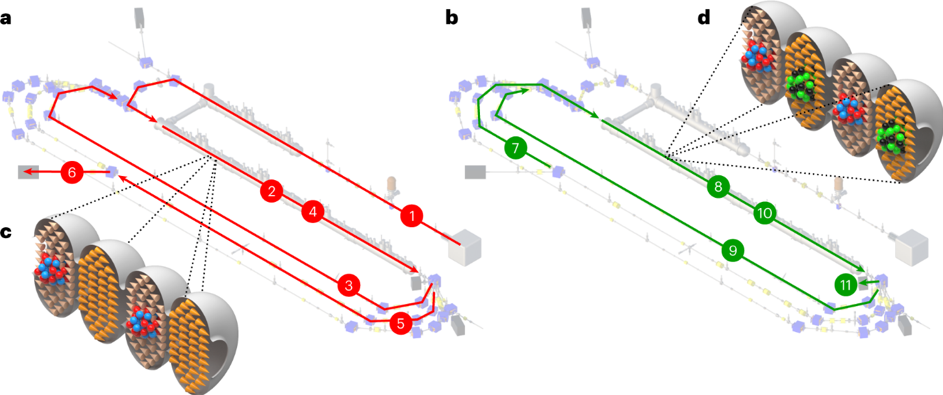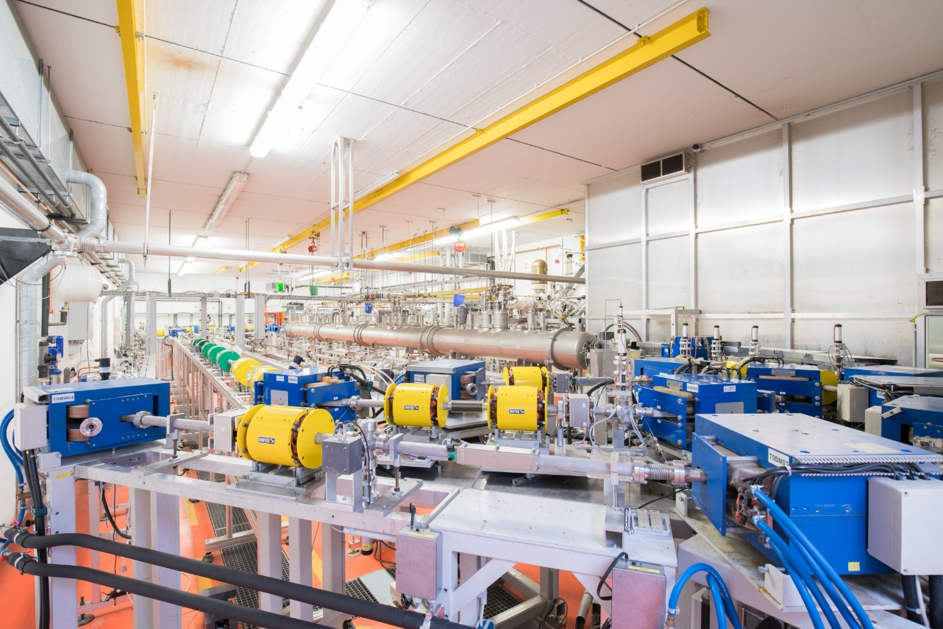Large-scale particle accelerators are essential for particle physics research. However, these large research devices have an enormous energy consumption. Increasing demands on future experiments exacerbate this problem. This raises the question of how large-scale research facilities can be operated in an environmentally sustainable manner.
In order to reduce energy consumption, new energy saving technologies under ongoing scientific research have to be considered. A promising technology is the energy recovery linear accelerator (ERL). The particle beam of a conventional linear accelerator is dumped at high energy after acceleration and using for an experiment. An ERL guides the particle beam back to the accelerator structures in order to be decelerated appropriately. By decelerating the beam, part of the kinetic energy of the particle beam is recovered and temporarily stored in the alternating electric field of the accelerator. This energy is recycled by using it to accelerate subsequent particles. In this way, the total power required for acceleration is significantly reduced.
The concept of energy recovery in linear accelerators was first proposed in 1965. In the past, a couple of ERLs have been realized in which electrons were only accelerated once and decelerated once. The efficiency of an ERL can be further increased by the combination of the energy recovery concept with the concept of multi-turn acceleration, allowing higher beam energies to be achieved with reduced resource requirements. The team of the S-DALINAC, the superconducting electron accelerator at TU Darmstadt, has now successfully achieved multi-turn energy recovery. In the related scientific publication, the researchers presented a new measurement demonstrating a saving of energy required for acceleration in a double-turn mode. An energy recovery mode was combined with conventional double-turn acceleration (see Figure 2): After accelerating once, the beam was guided back to the main accelerator via recirculation beamlines so that it passed the main accelerator for another acceleration. The beam was bent back to the main accelerator again, but in such a way that the electrons now reached the alternating electric fields of the main accelerator structures at a point in time where the electrons were decelerated. The deceleration is ensured by a suitable path length of the recirculation beamline. Energy recovery took place on two consecutive main accelerator transits. A recovery of up to 87% of the used radio frequency power to accelerate the beam in the main accelerator was measured.

Another feature is the design of the accelerator. In the case of the S-DALINAC, the multi-turn energy recovery mode was implemented in an accelerator design in which the once accelerated and the once decelerated beam share a recirculation beamline. In this way, less components are needed as well as the electrical power required for them is lower compared to an accelerator design with individual recirculation beamlines.
The measurement of energy saving while operating in the multi-turn energy recovery mode proofed the capability of that technology. Future large-scale research in particle physics will require accelerators with beam powers in the gigawatt range. By using a multi-turn energy recovery linear accelerator, the power required is reduced to a fraction of the power usage of a comparable conventional linear accelerator.
Further information:
Schliessmann, F., Arnold, M., Juergensen, L. et al. Realization of a multi-turn energy recovery accelerator. Nat. Phys. (2023). https://doi.org/10.1038/s41567-022-01856-w

